Abstract
The ability of 170 serologically classified strains of Escherichia coli to agglutinate human erythrocytes was examined. Erythrocytes of blood group A were more sensitive indicators of this property than were those of groups B or O. The predominant receptor was shown to be mannose containing; however, an additional receptor was found in two of nine strains studied. Natural mannose-like inhibitors were not found in unconcentrated urine obtained from 12 humans. Isolates from the urine or blood of patients with infections agglutinated erythrocytes significantly more frequently than did isolates from feces. Urine isolates of 10 common serogroups and isolates of less common serogroups did not differ in their ability to agglutinate erythrocytes. Among isolates from the urine of patients with infections, the ability to agglutinate erythrocytes did not correlate with either the serogroup of the strain or the clinical syndrome of the patient. Of the several other biological properties that were examined, only the production of colicins showed a significant association with the ability to agglutinate human erythrocytes.
Full text
PDF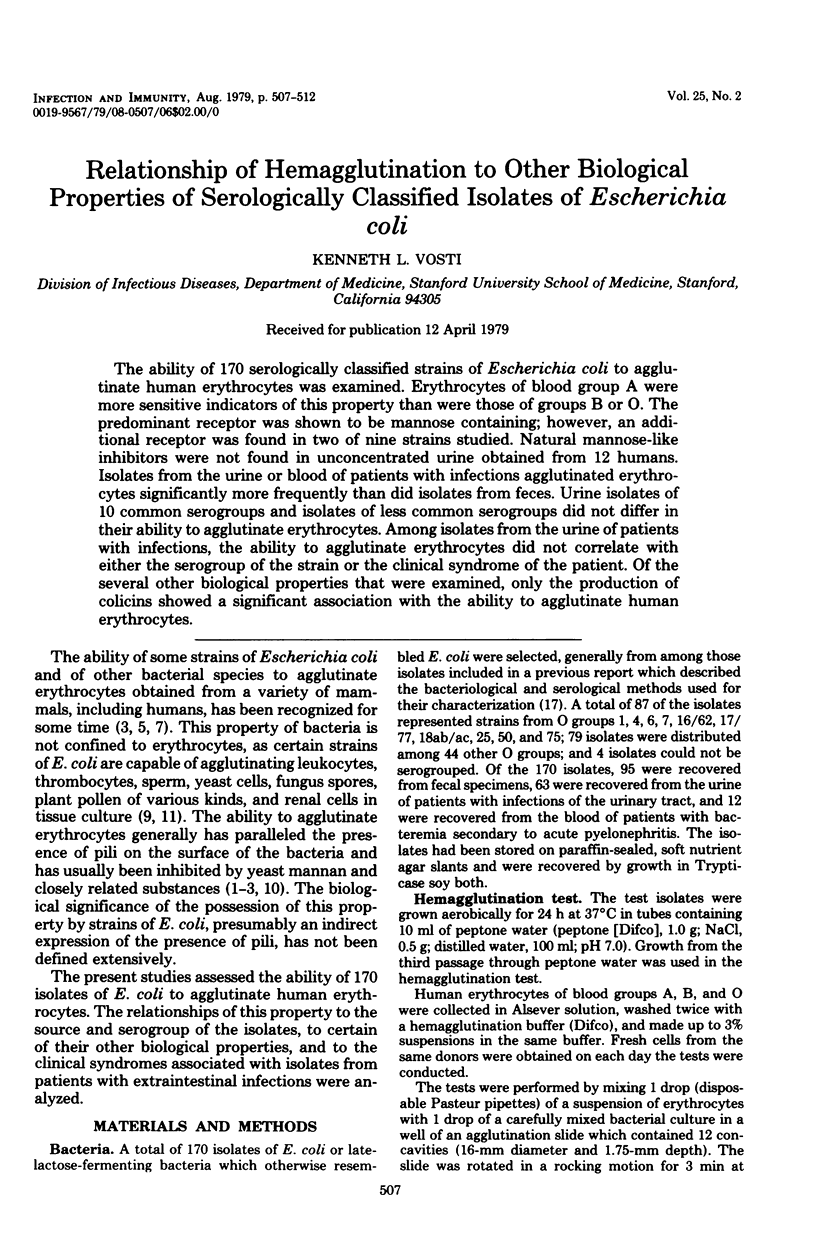
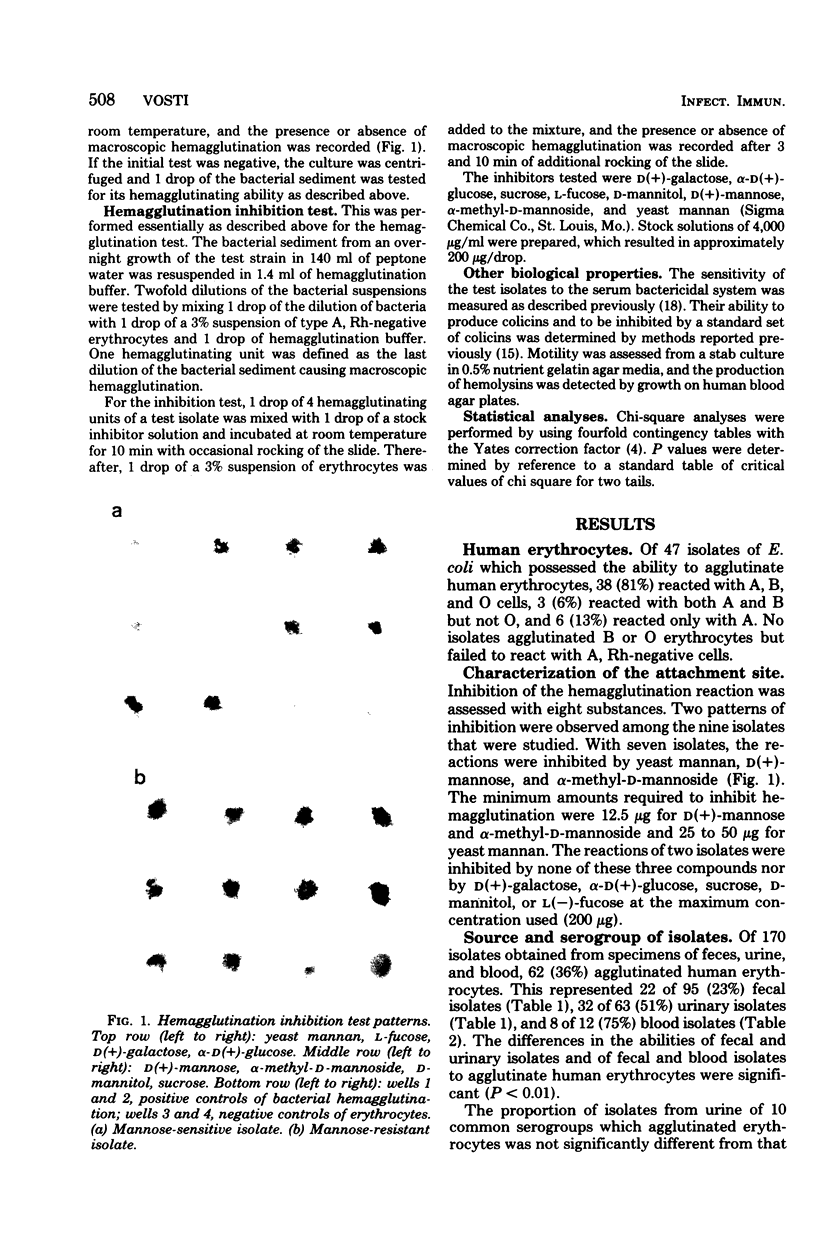

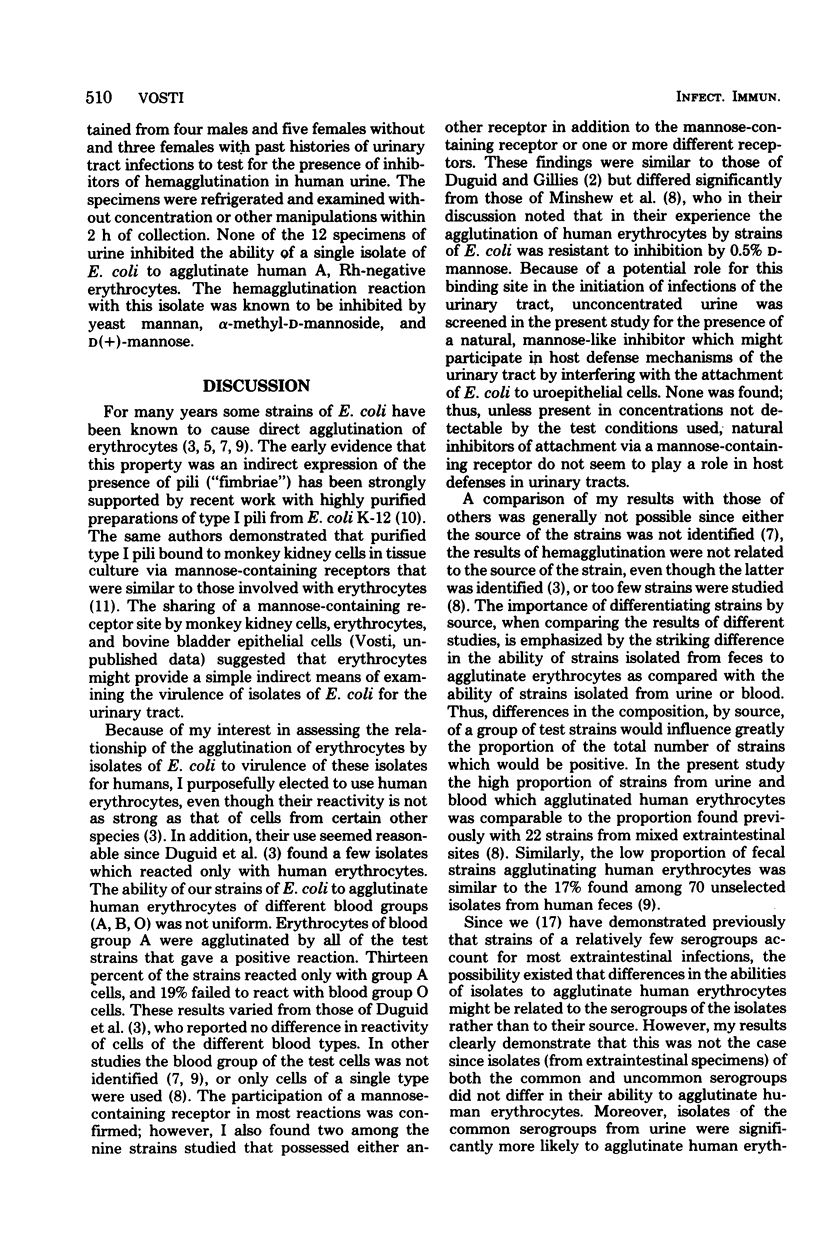
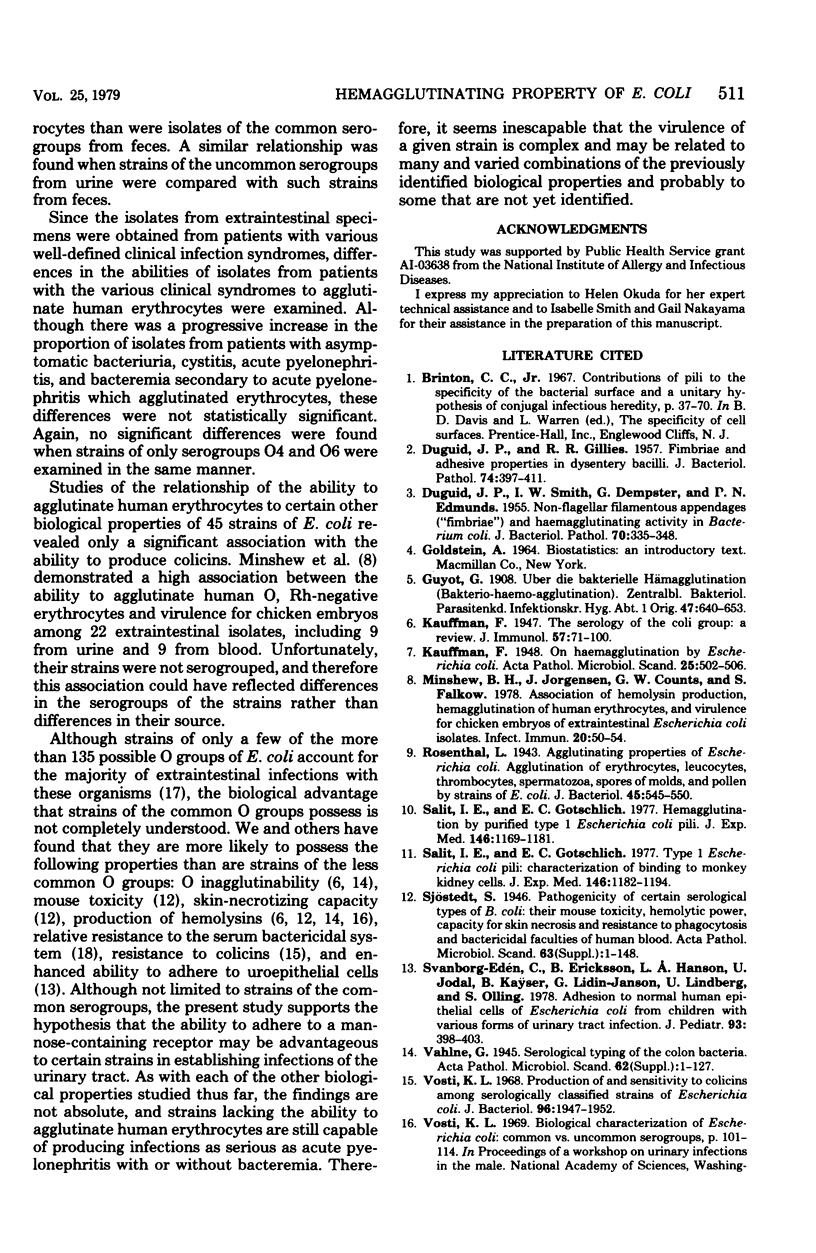
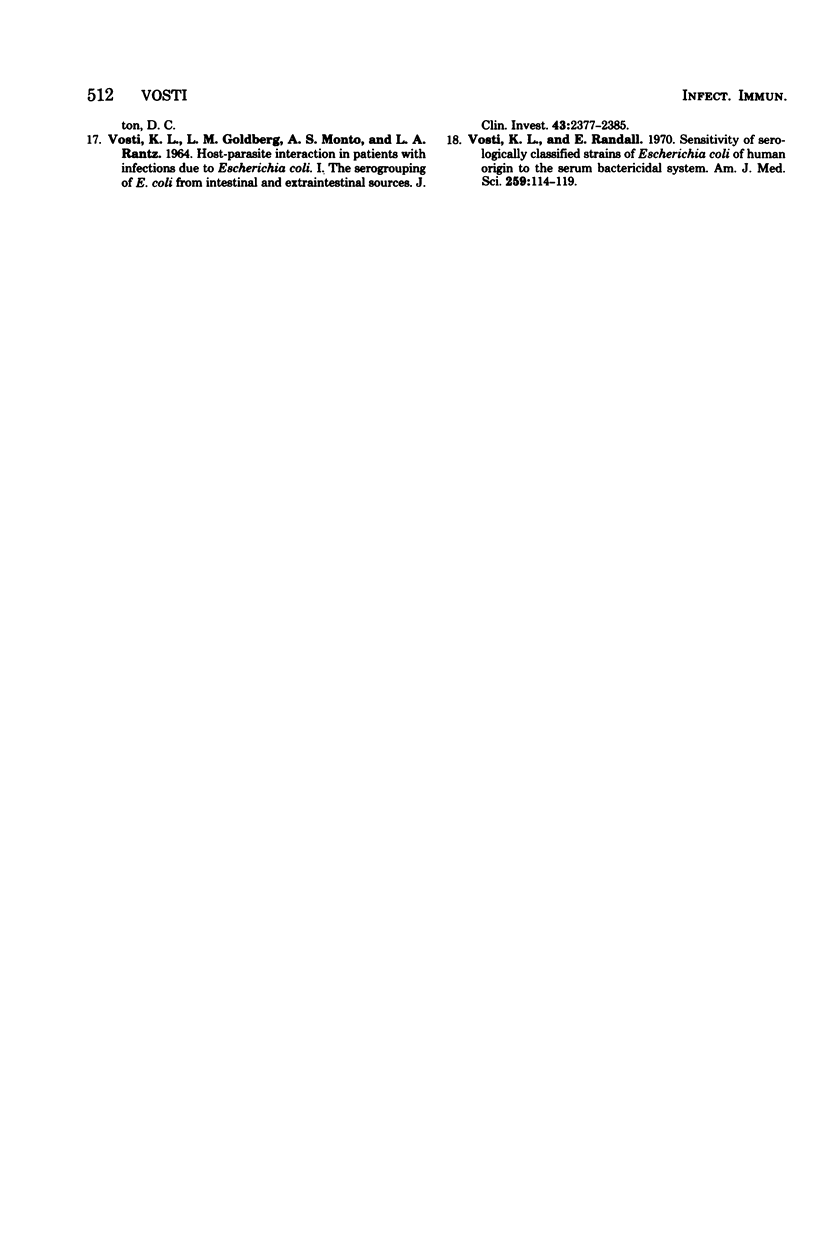
Images in this article
Selected References
These references are in PubMed. This may not be the complete list of references from this article.
- DUGUID J. P., SMITH I. W., DEMPSTER G., EDMUNDS P. N. Non-flagellar filamentous appendages (fimbriae) and haemagglutinating activity in Bacterium coli. J Pathol Bacteriol. 1955 Oct;70(2):335–348. doi: 10.1002/path.1700700210. [DOI] [PubMed] [Google Scholar]
- Edén C. S., Eriksson B., Hanson L. A., Jodal U., Kaijser B., Janson G. L., Lindberg U., Olling S. Adhesion to normal human uroepithelial cells of Escherichia coli from children with various forms of urinary tract infection. J Pediatr. 1978 Sep;93(3):398–403. doi: 10.1016/s0022-3476(78)81145-7. [DOI] [PubMed] [Google Scholar]
- Minshew B. H., Jorgensen J., Counts G. W., Falkow S. Association of hemolysin production, hemagglutination of human erythrocytes, and virulence for chicken embryos of extraintestinal Escherichia coli isolates. Infect Immun. 1978 Apr;20(1):50–54. doi: 10.1128/iai.20.1.50-54.1978. [DOI] [PMC free article] [PubMed] [Google Scholar]
- Rosenthal L. Agglutinating Properties of Escherichia coli: Agglutination of Erythrocytes, Leucocytes, Thrombocytes, Spermatozoa, Spores of Molds, and Pollen by Strains of E. Coli. J Bacteriol. 1943 Jun;45(6):545–550. doi: 10.1128/jb.45.6.545-550.1943. [DOI] [PMC free article] [PubMed] [Google Scholar]
- Salit I. E., Gotschlich E. C. Hemagglutination by purified type I Escherichia coli pili. J Exp Med. 1977 Nov 1;146(5):1169–1181. doi: 10.1084/jem.146.5.1169. [DOI] [PMC free article] [PubMed] [Google Scholar]
- Salit I. E., Gotschlich E. C. Type I Escherichia coli pili: characterization of binding to monkey kidney cells. J Exp Med. 1977 Nov 1;146(5):1182–1194. doi: 10.1084/jem.146.5.1182. [DOI] [PMC free article] [PubMed] [Google Scholar]
- VOSTI K. L., GOLDBERG L. M., MONTO A. S., RANTZ L. A. HOST-PARASITE INTERACTION IN PATIENTS WITH INFECTIONS DUE TO ESCHERICHIA COLI. I. THE SEROGROUPING OF E. COLI FROM INTESTINAL AND EXTRAINTESTINAL SOURCES. J Clin Invest. 1964 Dec;43:2377–2385. doi: 10.1172/JCI105112. [DOI] [PMC free article] [PubMed] [Google Scholar]
- Vosti K. L. Production of and sensitivity to colicins among serologically classified strains of Escherichia coli. J Bacteriol. 1968 Dec;96(6):1947–1952. doi: 10.1128/jb.96.6.1947-1952.1968. [DOI] [PMC free article] [PubMed] [Google Scholar]
- Vosti K. L., Randall E. Sensitivity of serologically classified strains of escherichia coli of human origin to the serum bactericidal system. Am J Med Sci. 1970 Feb;259(2):114–119. doi: 10.1097/00000441-197002000-00005. [DOI] [PubMed] [Google Scholar]



